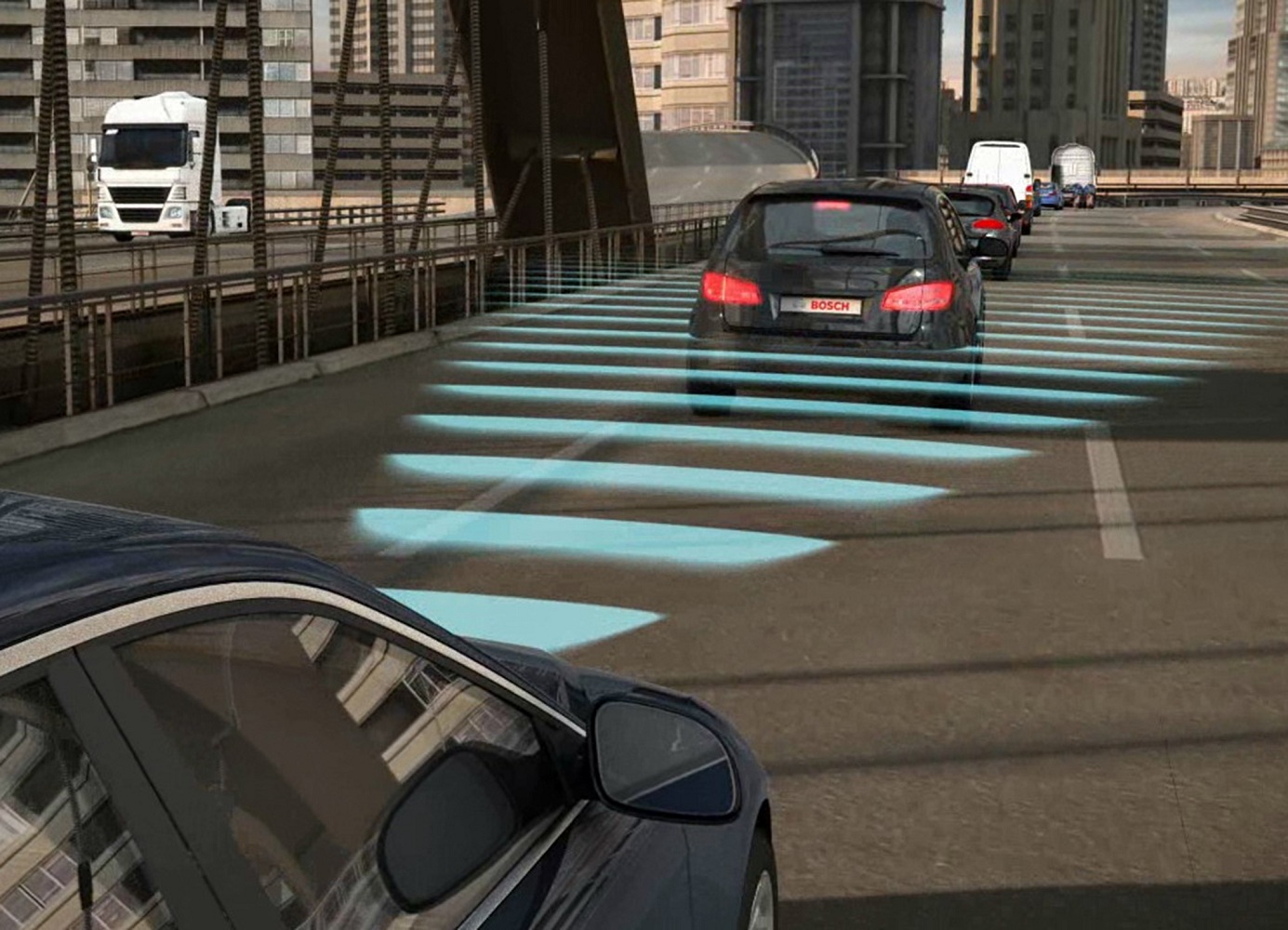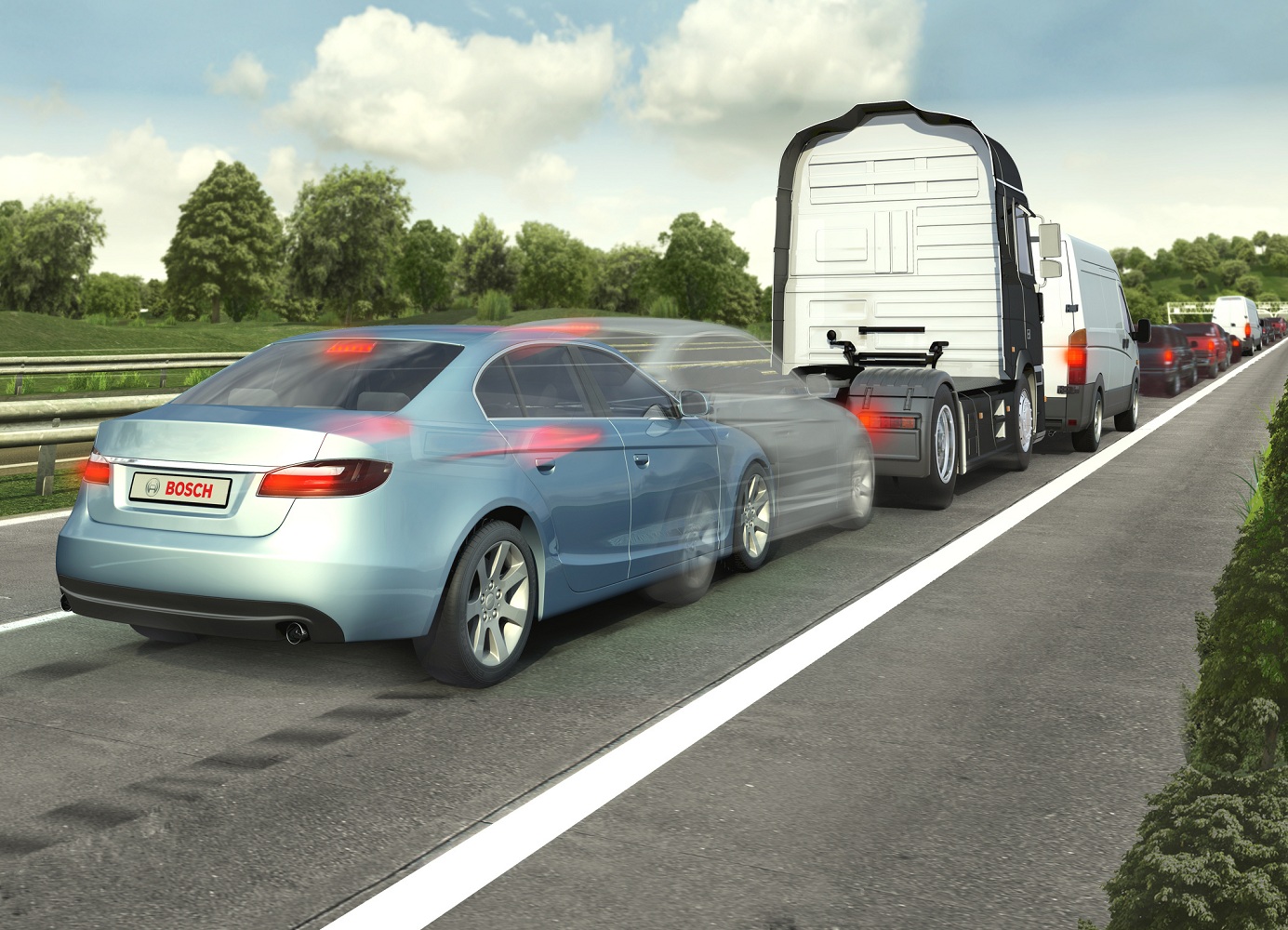Severe rear-end collisions happen almost daily. In the last four years, there has been an increase in the number of traffic casualties caused by a failure to maintain a safe distance. In 2010, according to a report from the German federal statistics office, 42,017 motorists caused collisions by driving too close to the car in front of them; in 2013, this figure was 45,735 – an increase of 9 percent. “This trend has to be stopped. Driver assistance systems, especially ACC (Adaptive Cruise Control), can play a key role here,” says Gerhard Steiger, president of the Bosch Chassis Systems Control division.
Worldwide, more than 5,000 Bosch associates are developing new driver assistance and safety systems. The aim is to eliminate traffic accidents completely, or at least to mitigate their consequences. For instance, on freeways or overland routes, rear-end collisions can be avoided with ACC adaptive cruise control. Once activated, the system adjusts the vehicle’s driving speed to the flow of traffic by automatically accelerating and braking. Even in the heaviest traffic, ACC can maintain the pre-set safe distance to the vehicle in front, enabling the driver to better concentrate on the driving situation at hand.
Less need to brake sharply on freeways
Bosch’s standard ACC can be activated from speeds of around 30 kilometers per hour. In its Stop & Go version, ACC is also active below 30 kilometers per hour. In traffic jams, it can slow the car down, or even stop it completely. If the car has automatic transmission, and the traffic hold-up is only brief, ACC Stop & Go can set the vehicle in motion once again. Both versions of adaptive cruise control ensure that the vehicle is driven smoothly, fuel-efficiently, and above all safely. “In combination with forward collision warning system, ACC could reduce the number of freeway incidents requiring sharp braking by 67 percent, and the incidence of tailgating by 73 percent,” says Gerhard Steiger, quoting from the results of a four-year euroFOT field study.
A radar sensor is usually at the core of Bosch ACC. Installed at the front of the vehicle, the sensor permanently monitors the road ahead. If it spots a slower car within its detection range, the system reduces speed by releasing the accelerator or actively engaging the brake control system. If the car ahead speeds up or changes lanes, the ACC automatically accelerates to the driver’s desired speed. Until now, adaptive cruise control has mostly featured in high-end vehicles. But now that sensors have been customized to meet the needs of various specific requirements, and thanks to cost-cutting innovations, the cost of such systems is becoming more attractive for customers in all vehicle classes. “Our MRR mid-range radar sensor, which is already used in the VW Golf and Polo, makes functions such as ACC affordable for even compact-class vehicles, and hence for the wider market,” Gerhard Steiger says.
Emergency braking systems that slam on the brakes
The sensor that makes ACC and ACC Stop & Go possible can also be used in an automatic emergency braking system. Unlike cruise control, an automatic emergency braking system is capable of triggering a full braking maneuver. Before that happens, however, the system uses visual and acoustic signals to warn the driver and then, if necessary, performs a partial braking maneuver ahead of the potential obstacle. At the same time, it puts the braking system on alert for a full emergency stop. If the driver responds, this means the maximum braking power is available immediately. If the driver doesn’t respond, the emergency braking system takes over and slams on the brakes by itself.
Since the beginning of this year, being fitted with a proactive assistance system with sensors that monitor the vehicle’s surroundings is a minimum requirement for a vehicle to qualify for Euro NCAP’s highest rating of five stars. From 2016, this top rating will also require proactive pedestrian protection. “These changes to the rating scheme support the widespread adoption of these driver assistance systems,” Gerhard Steiger says. “Installing safety technology in as many vehicles as possible brings us closer to our goal of accident- and injury-free driving.”
Source: Bosch
Romain’s opinion:
Adaptive Cruise Control is becoming a standard equipment in more and more cars and represents to me a first step toward autonomous driving. I believe that it will become mandatory for all the new cars sold in Europe in a near future so did the ABS or the ESP. However, do you think that drivers will always choose to activate it while driving? Should we remove the possibility to disable ACC by the driver?




















